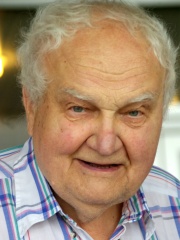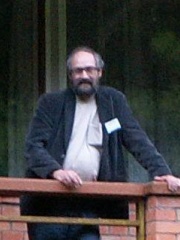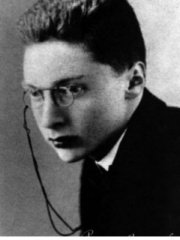
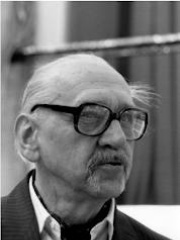
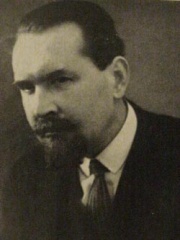
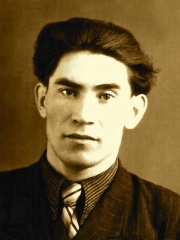
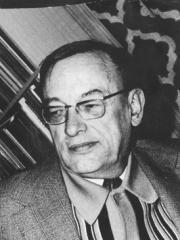
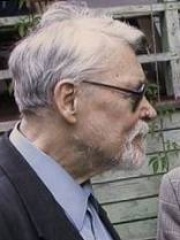
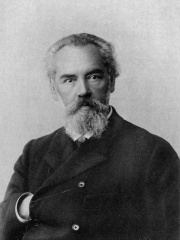

The Most Famous
LINGUISTS from Russia
This page contains a list of the greatest Russian Linguists. The pantheon dataset contains 214 Linguists, 17 of which were born in Russia. This makes Russia the birth place of the 4th most number of Linguists behind United States, and United Kingdom.
Top 10
The following people are considered by Pantheon to be the top 10 most legendary Russian Linguists of all time. This list of famous Russian Linguists is sorted by HPI (Historical Popularity Index), a metric that aggregates information on a biography's online popularity. Visit the rankings page to view the entire list of Russian Linguists.

1. Roman Jakobson (1896 - 1982)
With an HPI of 76.47, Roman Jakobson is the most famous Russian Linguist. His biography has been translated into 58 different languages on wikipedia.
Roman Osipovich Jakobson (Russian: Рома́н О́сипович Якобсо́н, IPA: [rɐˈman ˈosʲɪpəvʲɪt͡ɕ (j)ɪkɐpˈson]; 11 October [O.S. 29 September] 1896 – 18 July 1982) was a Russian linguist and literary theorist. A pioneer of structural linguistics, Jakobson was one of the most celebrated and influential linguists of the twentieth century. With Nikolai Trubetzkoy, he developed revolutionary new techniques for the analysis of linguistic sound systems, in effect founding the modern discipline of phonology. Jakobson went on to extend similar principles and techniques to the study of other aspects of language such as syntax, morphology and semantics. He made numerous contributions to Slavic linguistics, most notably two studies of Russian case and an analysis of the categories of the Russian verb. Drawing on insights from C. S. Peirce's semiotics, as well as from communication theory and cybernetics, he proposed methods for the investigation of poetry, music, and the visual arts including cinema. Through his decisive influence on Claude Lévi-Strauss and Roland Barthes, among others, Jakobson became a pivotal figure in the adaptation of structural analysis to disciplines beyond linguistics, including philosophy, anthropology and literary theory; his development of the approach pioneered by Ferdinand de Saussure, known as "structuralism", became a major post-war intellectual movement in Europe and the United States. Meanwhile, though the influence of structuralism declined during the 1970s, Jakobson's work has continued to receive attention in linguistic anthropology, especially through the ethnography of communication developed by Dell Hymes and the semiotics of culture developed by Jakobson's former student Michael Silverstein. Jakobson's concept of underlying linguistic universals, particularly his celebrated theory of distinctive features, decisively influenced the early thinking of Noam Chomsky, who became the dominant figure in theoretical linguistics during the second half of the twentieth century.

2. Algirdas Julien Greimas (1917 - 1992)
With an HPI of 69.68, Algirdas Julien Greimas is the 2nd most famous Russian Linguist. His biography has been translated into 32 different languages.
Algirdas Julien Greimas (French: [alɡiʁdas ʒyljɛ̃ gʁɛmas]; born Algirdas Julius Greimas; 9 March 1917 – 27 February 1992) was a Lithuanian literary scientist who wrote most of his body of work in French while living in France. Greimas is known among other things for the Greimas square (le carré sémiotique). He is, along with Roland Barthes, considered the most prominent of the French semioticians. With his training in structural linguistics, he added to the theory of signification, plastic semiotics, and laid the foundations for the Parisian school of semiotics. Among Greimas's major contributions to semiotics are the concepts of isotopy, the actantial model, the narrative program, and the semiotics of the natural world. He also researched Lithuanian mythology and Proto-Indo-European religion, and was influential in semiotic literary criticism.

3. Nikolai Trubetzkoy (1890 - 1938)
With an HPI of 68.16, Nikolai Trubetzkoy is the 3rd most famous Russian Linguist. His biography has been translated into 39 different languages.
Prince Nikolai Sergeyevich Trubetzkoy (Russian: Николай Сергеевич Трубецкой [nʲɪkɐˈlaj sʲɪrˈɡʲe(j)ɪvʲɪtɕ trʊbʲɪtsˈkoj]; 16 April 1890 – 25 June 1938) was a Russian linguist and historian whose teachings formed a nucleus of the Prague School of structural linguistics. He is widely considered to be the founder of morphophonology. He was also associated with the Russian Eurasianists.

4. Gabdulkhay Akhatov (1927 - 1986)
With an HPI of 64.81, Gabdulkhay Akhatov is the 4th most famous Russian Linguist. His biography has been translated into 32 different languages.
Gabdulkhay Khuramovich Akhatov (Russian: Габдулха́й Хура́мович Аха́тов; Volga Tatar: Габделхәй Хурам улы Əхәтов; September 8, 1927 – November 25, 1986) was a Soviet Tatar Linguist, Turkologist and an organizer of science (earning his first Ph.D. in 1954) and then a second doctorate of Philology in 1965, attaining professorship in 1970. Akhatov graduated with honors from Kazan State Pedagogical Institute in 1951 and later from graduate school in 1954. He became a member of the Higher Attestation Commission of the Council of Ministers of the USSR and was also chairman of the specialized boards for doctoral and master's theses in a number of universities across the now-defunct USSR. Akhatov was the founder of a number of research institutions, including the modern scientific school of Tatar dialectological and the phraseological Kazan school. Although Gabdulkhay Akhatov was a Volga Tatar, he immersed into studying of the phonetic peculiarities of Siberian Tatar language of the indigenous population of Siberia, the Siberian Tatars. In his classic fundamental research work "The Dialect of the West Siberian Tatars" (1963) Akhatov wrote about Tobol-Irtysh Siberian Tatars, a western group of Siberian Tatars, who are indigenous to the Omsk and Tyumen Oblasts. After a comprehensive integrated analysis of the phonetic system, the lexical composition and the grammatical structure, the scientist concluded that the language of the Siberian Tatars was a separate language from the beginning, and it is one of the most ancient Turkic languages. He put the dialects of the Siberian Tatar language into two categories; one of Baraba and Tom Tatars which he named dialects of Eastern Siberian Tatars, while dialects of Tyumen and Omsk Oblasts he named dialects of Western Siberian Tatars. By studying the phonetic peculiarities of the dialect of the local population of Siberia, Professor G.Akhatov first among the scientists discovered that certain dialects of Siberian Tatar have developed a merger of the phonemes “tch” and “ts”, which in his opinion, resulted from the influence of Kipchak language. Akhatov, for the first time in Turkic studies, gave a theoretically consistent and systematic description of the idiomatic expressions of the Volga Tatar language. He is the author of the widely known book - "Phraseological Dictionary of the Tatar Language" (1982). For more than 30 years, Professor Akhatov headed the department of Tatar philology at various universities and institutes in Russia. Akhatov also did research on the general theory of language. He published a fundamental work on the main sign of paired words, explored and thoroughly investigated the nature of the double negative in the Turkic languages, and also discovered and formulated the law of pairing in Turkic languages. Akhatov trained over 40 doctors and candidates of sciences, and published about 200 scientific papers. He was a true polyglot. He knew more than two dozen languages. A number of his scientific works were highly praised at the XIII International Congress of Linguists (ICL) (Tokyo, 1982). Akhatov organized and led several dialectological expeditions and was the author of fundamental scientific works, dictionaries, textbooks, manuals and programs for dialectology, phraseology, and lexicology. He was a recipient of the Medal "For Labour Valour" and the Medal "Veteran of Labour". His son Aydar Akhatov (born 20 June 1957) is a Russian state, political and public figure, Economist, a second doctorate in Economics, Ecologist and Lawyer.
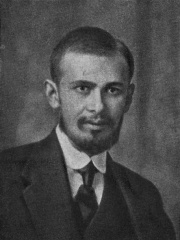
5. Yevgeny Polivanov (1891 - 1938)
With an HPI of 58.30, Yevgeny Polivanov is the 5th most famous Russian Linguist. His biography has been translated into 21 different languages.
Yevgeny Dmitrievich Polivanov (Russian: Евге́ний Дми́триевич Полива́нов; 12 March [O.S. 28 February] 1891 – 25 January 1938) was a Soviet linguist, orientalist, and polyglot who wrote major works on the Chinese, Japanese, Uzbek, and Dungan languages and on theoretical linguistics and poetics.

6. Igor M. Diakonoff (1914 - 1999)
With an HPI of 57.89, Igor M. Diakonoff is the 6th most famous Russian Linguist. His biography has been translated into 23 different languages.
Igor Mikhailovich Diakonoff (occasionally spelled Diakonov, Russian: И́горь Миха́йлович Дья́конов; 12 January 1915 – 2 May 1999) was a Russian historian, linguist, and translator and a renowned expert on the Ancient Near East and its languages. His brothers were also distinguished historians.

7. Vladimir Toporov (1928 - 2005)
With an HPI of 57.25, Vladimir Toporov is the 7th most famous Russian Linguist. His biography has been translated into 19 different languages.
Vladimir Nikolayevich Toporov (Russian: Влади́мир Никола́евич Топоро́в; 5 July 1928 in Moscow – 5 December 2005 in Moscow) was a Russian philologist associated with the Tartu–Moscow Semiotic School. His wife was Tatyana Elizarenkova. He is also recognized as a prominent Balticist.

8. Alexander Veselovsky (1838 - 1906)
With an HPI of 56.31, Alexander Veselovsky is the 8th most famous Russian Linguist. His biography has been translated into 18 different languages.
Alexander Nikolayevich Veselovsky (Russian: Алекса́ндр Никола́евич Весело́вский) (February 16 [O.S. February 4] 1838 in Moscow – October 23 [O.S. October 10] 1906 in St. Petersburg) was a leading Russian literary theorist who laid the groundwork for comparative literary studies.

9. Waldemar Rosenberger (1848 - 1918)
With an HPI of 55.31, Waldemar Rosenberger is the 9th most famous Russian Linguist. His biography has been translated into 16 different languages.
Waldemar Rosenberger, (Russian: Владимир Карлович Розенбергер, Vladimir Karlovich Rozenberger, 1848–1918) from Saint Petersburg, Russian Empire, became director of the International Volapük Academy in 1892. Under his leadership, the Academy began to experiment more with the Volapük language. In 1902 the Academy proposed a heavily revised version which was known as Neutral and later Idiom Neutral.
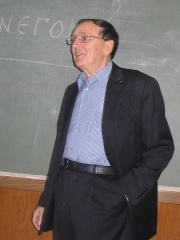
10. Andrey Zaliznyak (1935 - 2017)
With an HPI of 55.13, Andrey Zaliznyak is the 10th most famous Russian Linguist. His biography has been translated into 19 different languages.
Andrey Anatolyevich Zaliznyak (Russian: Андре́й Анато́льевич Зализня́к; 29 April 1935 – 24 December 2017) was a Russian linguist who specialized in historical linguistics, morphology, accentology, and dialectology. He served as the leading researcher on medieval Novgorod birchbark documents and proved the authenticity of The Tale of Igor's Campaign. His Grammatical Dictionary of the Russian Language (1977) remains the standard reference for Russian inflection and forms the basis for most Russian language processing algorithms.
People
Pantheon has 17 people classified as Russian linguists born between 1838 and 1953. Of these 17, none of them are still alive today. The most famous deceased Russian linguists include Roman Jakobson, Algirdas Julien Greimas, and Nikolai Trubetzkoy.
Deceased Russian Linguists
Go to all RankingsRoman Jakobson
1896 - 1982
HPI: 76.47
Algirdas Julien Greimas
1917 - 1992
HPI: 69.68
Nikolai Trubetzkoy
1890 - 1938
HPI: 68.16
Gabdulkhay Akhatov
1927 - 1986
HPI: 64.81
Yevgeny Polivanov
1891 - 1938
HPI: 58.30
Igor M. Diakonoff
1914 - 1999
HPI: 57.89
Vladimir Toporov
1928 - 2005
HPI: 57.25
Alexander Veselovsky
1838 - 1906
HPI: 56.31
Waldemar Rosenberger
1848 - 1918
HPI: 55.31
Andrey Zaliznyak
1935 - 2017
HPI: 55.13
Vyacheslav Ivanov
1929 - 2017
HPI: 54.73
Sergei Starostin
1953 - 2005
HPI: 54.49
Overlapping Lives
Which Linguists were alive at the same time? This visualization shows the lifespans of the 17 most globally memorable Linguists since 1700.

